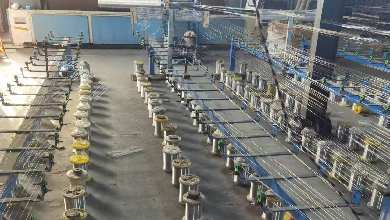-
 Afrikaans
Afrikaans -
 Albanian
Albanian -
 Amharic
Amharic -
 Arabic
Arabic -
 Armenian
Armenian -
 Azerbaijani
Azerbaijani -
 Basque
Basque -
 Belarusian
Belarusian -
 Bengali
Bengali -
 Bosnian
Bosnian -
 Bulgarian
Bulgarian -
 Catalan
Catalan -
 Cebuano
Cebuano -
 China
China -
 Corsican
Corsican -
 Croatian
Croatian -
 Czech
Czech -
 Danish
Danish -
 Dutch
Dutch -
 English
English -
 Esperanto
Esperanto -
 Estonian
Estonian -
 Finnish
Finnish -
 French
French -
 Frisian
Frisian -
 Galician
Galician -
 Georgian
Georgian -
 German
German -
 Greek
Greek -
 Gujarati
Gujarati -
 Haitian Creole
Haitian Creole -
 hausa
hausa -
 hawaiian
hawaiian -
 Hebrew
Hebrew -
 Hindi
Hindi -
 Miao
Miao -
 Hungarian
Hungarian -
 Icelandic
Icelandic -
 igbo
igbo -
 Indonesian
Indonesian -
 irish
irish -
 Italian
Italian -
 Japanese
Japanese -
 Javanese
Javanese -
 Kannada
Kannada -
 kazakh
kazakh -
 Khmer
Khmer -
 Rwandese
Rwandese -
 Korean
Korean -
 Kurdish
Kurdish -
 Kyrgyz
Kyrgyz -
 Lao
Lao -
 Latin
Latin -
 Latvian
Latvian -
 Lithuanian
Lithuanian -
 Luxembourgish
Luxembourgish -
 Macedonian
Macedonian -
 Malgashi
Malgashi -
 Malay
Malay -
 Malayalam
Malayalam -
 Maltese
Maltese -
 Maori
Maori -
 Marathi
Marathi -
 Mongolian
Mongolian -
 Myanmar
Myanmar -
 Nepali
Nepali -
 Norwegian
Norwegian -
 Norwegian
Norwegian -
 Occitan
Occitan -
 Pashto
Pashto -
 Persian
Persian -
 Polish
Polish -
 Portuguese
Portuguese -
 Punjabi
Punjabi -
 Romanian
Romanian -
 Russian
Russian -
 Samoan
Samoan -
 Scottish Gaelic
Scottish Gaelic -
 Serbian
Serbian -
 Sesotho
Sesotho -
 Shona
Shona -
 Sindhi
Sindhi -
 Sinhala
Sinhala -
 Slovak
Slovak -
 Slovenian
Slovenian -
 Somali
Somali -
 Spanish
Spanish -
 Sundanese
Sundanese -
 Swahili
Swahili -
 Swedish
Swedish -
 Tagalog
Tagalog -
 Tajik
Tajik -
 Tamil
Tamil -
 Tatar
Tatar -
 Telugu
Telugu -
 Thai
Thai -
 Turkish
Turkish -
 Turkmen
Turkmen -
 Ukrainian
Ukrainian -
 Urdu
Urdu -
 Uighur
Uighur -
 Uzbek
Uzbek -
 Vietnamese
Vietnamese -
 Welsh
Welsh -
 Bantu
Bantu -
 Yiddish
Yiddish -
 Yoruba
Yoruba -
 Zulu
Zulu
yard netting
Understanding Yard Netting Protecting Your Garden
Yard netting is an essential tool for any gardener or homeowner looking to protect their outdoor space from unwanted pests and debris. It serves a multifaceted purpose, acting as a barrier against birds, insects, and larger animals while also ensuring that plants can thrive without interference. This article explores the benefits of yard netting, its various applications, and tips for effective use.
One of the primary benefits of yard netting is its ability to safeguard vulnerable plants from birds and other wildlife that may be tempted to feast on fruits, vegetables, and flowers. For instance, berry bushes and young saplings are particularly at risk, as birds often swoop down, decimating the harvest before it can even ripen. By covering these plants with netting, gardeners can deter these pests while allowing sunlight and rain to reach their plants. This balance ensures an optimal growing environment.
In addition to protecting against birds, yard netting can also serve as a barrier against insect pests
. Certain netting types are finely woven, preventing smaller insects, such as aphids and cabbage worms, from reaching plants. By implementing netting, gardeners can reduce the need for chemical pesticides, promoting an environmentally friendly approach to gardening. This is particularly important for those growing organic produce, where maintaining a pesticide-free environment is a priority.yard netting

Moreover, yard netting is versatile and can be used in various settings beyond traditional gardens. It can be employed in orchards, vineyards, or even flower beds to create a protective shield. Homeowners with ponds may also use netting to prevent leaves and debris from falling into the water, thus maintaining cleanliness and reducing maintenance efforts.
Implementing yard netting is straightforward, but there are a few key tips to maximize its effectiveness. First, it’s crucial to secure the netting properly to prevent it from blowing away in strong winds. Using stakes or weights can ensure that the net remains in place. Second, consider the size of the mesh; it should be small enough to keep out the desired pests while still allowing beneficial insects to enter. Lastly, regular inspections for wear and tear will help prolong the life of the netting.
In summary, yard netting is an invaluable resource for protecting gardens and outdoor spaces. With its ability to guard against a variety of pests while allowing for natural growth processes, it represents a practical and eco-friendly solution for gardeners. Whether you’re looking to safeguard your vegetable patch or maintain a pristine flower bed, yard netting can make a significant difference in the health and productivity of your plants.
-
Shipping Plastic Bags for Every NeedNewsJul.24,2025
-
Safety Netting: Your Shield in ConstructionNewsJul.24,2025
-
Plastic Mesh Netting for Everyday UseNewsJul.24,2025
-
Nylon Netting for Every UseNewsJul.24,2025
-
Mesh Breeder Box for Fish TanksNewsJul.24,2025
-
Expanded Steel Mesh Offers Durable VersatilityNewsJul.24,2025











